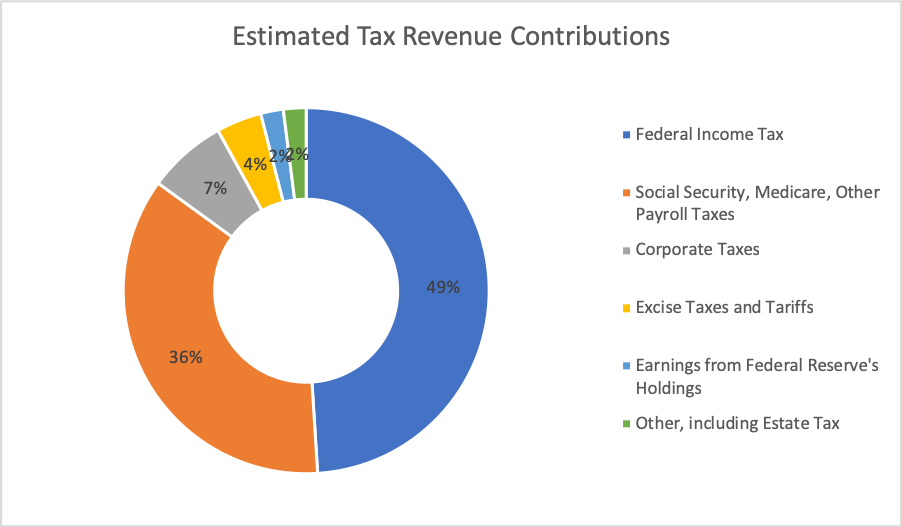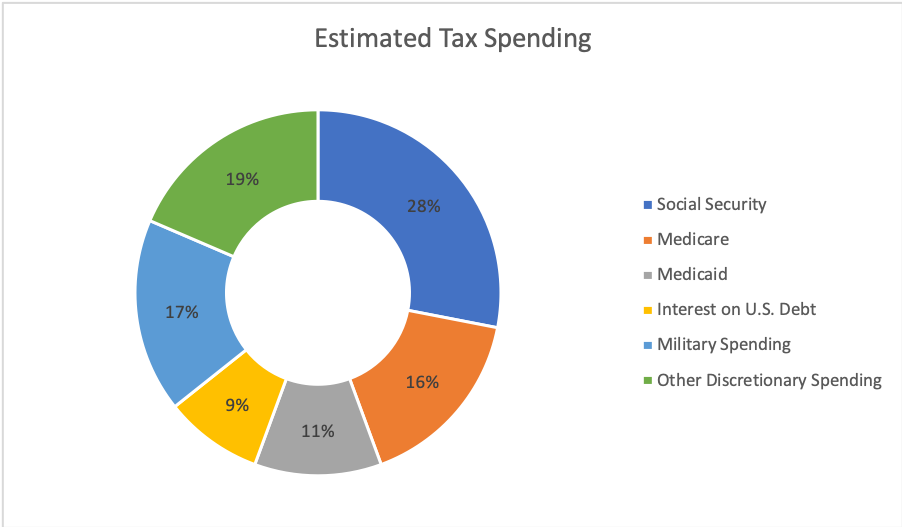Posted on

The federal income tax ends up taking a chunk out of your income every year. So, shouldn’t you at least understand where the income tax came from and where that money goes? Yes, you definitely should. We’re going to discuss the history of the income tax and where the tax revenue is currently being spent. Let’s begin with a brief history of the federal income tax.
It all started in 1862. That year, the U.S. began collecting a progressive federal tax to be used to pay the expenses of the Civil War. The tax rate started at a crippling 3% on income between $600 and $10,000. Along with the introduction of the tax, the office of the Commissioner of Internal Revenue was created. The commissioner could assess, levy and collect taxes.
In 1872, seven years after the end of the Civil War, the tax is abolished and federal income tax is replaced with higher excise taxes on tobacco and alcohol. Hooray…kind of! Oh wait, this is just temporary?
In 1894, federal income tax pops up again. However, it’s very short-lived. Grover Cleveland was president at the time and was not in favor of the tax but he let it become enacted without his signature. Then, just one year after this tax is implemented, it is deemed unconstitutional by the Supreme Court in a 5-4 vote and taken away (SCOTUS geeks check out Pollock v. Farmers Loan Trust Co.).
In 1913, we see the passing of the 16th amendment to the Constitution. The amendment gives Congress the legal ability to tax income. The amendment reads:
“The Congress shall have power to lay and collect taxes on incomes, from whatever source derived, without apportionment among the several States, and without regard to any census or enumeration.”
That same year the income tax was re-imposed under the Revenue Act of 1913.
In 1943, the Current Tax Payment Act is passed. With its passing, employers are required to withhold federal income taxes from workers’ paychecks and pay them directly to the government on the employee’s behalf.
In 1953, the dreaded Internal Revenue Service makes its debut (queue the Darth Vader music). Not really, it’s just been renamed from the Bureau of Internal Revenue which had been in existence.
In 1975, the Tax Reduction Act of 1975 is passed and creates the earned income tax credit.
Peppered throughout this timeline and continuing onward, there are other adjustments and changes in tax codes. It is a constantly changing and evolving set of tax laws. The latest being the tax reform that was signed into law last year and represents the largest change in more than 30 years.
As estimated by the Office of Management and Budget (https://www.whitehouse.gov/omb/), the individual income tax makes up approximately 49% of the tax revenue for the federal government for 2018. It is estimated that, for the current fiscal year, individual taxpayers will contribute just shy of $1.7 trillion to the federal government . Hold on. Writing it like that does not do it justice. The estimated individual income taxes for fiscal year 2018 is nearly $1,700,000,000. That’s a lot of zeros. Total tax revenue is approximately, $3.4 trillion, the other contributors are:
-
Social security, Medicare, and other payroll taxes, ~36%
-
Corporate taxes, ~7%
-
Excise taxes and tariffs, ~4%
-
Earnings from the Federal Reserve’s holdings, ~2%
-
Estate taxes and others, ~2%

Seems like a lot of money coming in, right? Well, we spend all that tax revenue plus more. What we end up spending all that money on is spread across a few key areas (FY2018 from https://www.whitehouse.gov/wp-content/uploads/2018/02/budget-fy2019.pdf):
-
Social Security, ~$1 trillion
-
Medicare, ~$582 billion
-
Medicaid, ~$400 billion
-
Interest on U.S. Debt, ~$310 billion
-
Discretionary Spending, ~$1.2 trillion
-
Military Spending (a portion of discretionary spending), ~$611 billion
-

So, now you know why we’re taxed, how much we’re taxed, and what the tax money is spent on. Sometimes knowing makes it easier to accept losing that chunk of your income. Hopefully, you feel that way. Wishful thinking? Probably.
Make sure you check back next month when we take a look at state income taxes and how some states, such as Florida, manage without an income tax.
Questions, comments, feedback? Please email jared@ware2now.com.
For more information on tax history, tax revenue, and tax spending, check out these great articles:
https://www.thebalance.com/current-u-s-federal-government-tax-revenue-3305762
https://www.thebalance.com/u-s-federal-budget-breakdown-3305789
https://turbotax.intuit.com/tax-tips/general/how-are-federal-taxes-spent/L6kinGuUt
https://money.howstuffworks.com/personal-finance/personal-income-taxes/income-tax.htm
https://money.howstuffworks.com/personal-finance/personal-income-taxes/federal-taxes.htm
https://www.thoughtco.com/history-of-the-us-federal-income-tax-3321600
https://www.stlouisfed.org/open-vault/2018/march/purpose-history-federal-income-taxes
https://www.infoplease.com/business-finance/taxes/history-income-tax-united-states
Sign up for email updates, notifications on new blog posts, and local events.
Subscribe

